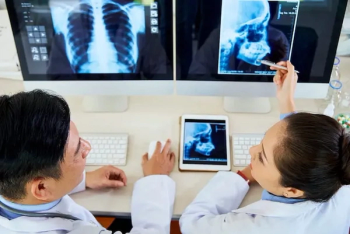
MRI prices fall sharply in markets outside U.S.
Tight reimbursement and improvements in low-field technology havecombined to force down the prices of magnetic resonance imagingsystems sold in Japan and Europe. Japanese MRI prices have beendeclining for at least two years, and this trend has spread
Tight reimbursement and improvements in low-field technology havecombined to force down the prices of magnetic resonance imagingsystems sold in Japan and Europe. Japanese MRI prices have beendeclining for at least two years, and this trend has spread toEurope and other international markets as well.
"Japan has the most competitive prices," said RalphAndreas, vice president of international for Toshiba America MRIin South San Francisco. But MRI prices in general can't go muchlower, he said.
The price of a popular 0.5-tesla superconductive system inJapan plummeted from 200 million yen ($1.5 million) to 100 millionyen ($735,000) between 1988 and 1989. The price continued to fallin 1990 to about 70 million yen ($514,000)--about half the U.S.price, according to the Japanese newspaper Nippon Kogyo Shimbun.
MRI prices in Europe were considerably higher than in the U.S.,but have dropped significantly. Prices in Japan, however, aremuch lower than those found in both the U.S. and Europe.
Tightly controlled reimbursement rates are forcing a majorreduction in prices outside the U.S., according to ChristopherJ. Peabody, senior vice president of international operationsat Picker. Customers in international markets are seeking magnetvalues at 0.5 tesla and below.
"A lot of shopping is done on the basis of lowest installedprice," Peabody said.
Prices in Europe have fallen about half as far as those inJapan. Mid-field systems sold for about 13 million francs ($2.5million) in France in 1987. Today, 0.5-tesla systems list in the9 million franc ($1.7 million) range. List price for a popularhigh-field system was 16 million francs ($3.1 million) in 1987and has dropped about 25% to 12 million francs ($2.3 million),according to Dr. Robert Lavayssi-ere, general secretary of theheavy equipment branch of the Private Practicing Radiologists'Union.
"This current (downward) price trend will force some ofthe smaller competitors out, and in the long run prices will flattenout," Andreas said. "There also has to be more consistencyin pricing between the various geographical markets."
For the time being, however, reimbursement will probably continueto decline and the price of MR systems will have to follow, hesaid.
"It is like a mini price war and it's unfortunate, becauseyou have to put more R&D into MRI than into any other imagingmodality," Andreas said.
THE INTERNATIONAL BATTLE FOR MARKET SHARE is another reason forfalling prices. Toshiba holds more than 50% of the medical imagingequipment market in Japan, and is struggling to retain it. Thetough MR price competition at mid and high field is largely dueto the efforts of "a very aggressive American company,"said Tadatoki Yoshida, senior manager of Toshiba's MR businessgroup in Tokyo.
Michael A. Silver, director of MRI programs at Instrumentarium,advanced a different scenario. Japanese mid-field prices are fallingbecause of Toshiba's effort to squeeze Hitachi in low-field competition,he said.
"Toshiba seems to have targeted Hitachi as a major competitor.They are dropping their (mid-field) system prices into the low$500,000 range," Silver said. The result is that 0.2-teslasystems lose their price advantage over 0.5-tesla systems, hesaid.
Pressure from Toshiba within Japan is forcing other vendorslike Hitachi into more aggressive selling in all modalities inEurope and the U.S., Silver said.
Hitachi, however, claims to have edged into the number-oneslot for MRI units installed in Japan, according to ChristianWetzel, director of marketing for Hitachi, Europe (see chart).A 0.5-tesla system that the company does not plan to export madeup almost a third of Hitachi's 1989 sales.
Philips is also looking for market growth at lower fields.Since the first delivery of its 0.5-tesla T5 in 1988, Philipshas received more than 200 orders worldwide and has installedalmost 100, said Maarten van Herk, director of Philips' worldwideMRI business. Roughly 60% of those systems are outside the U.S.,he said.
While the overall MRI market continues to grow, the high-fieldportion of it is shrinking, according to Joseph Vacca, directorof MRI for Philips in North America. Sales of 1.5-tesla unitshave shrunk from about 50% to about 30% of the market in the pastfew years, he said. The bulk of sales remains in North America.
With angiography available at mid field and mid-field subsecondimaging under development, Philips and other manufacturers indicatethat spectroscopy is about the only 1.5-tesla feature that won'tmigrate to 0.5-tesla machines.
Newsletter
Stay at the forefront of radiology with the Diagnostic Imaging newsletter, delivering the latest news, clinical insights, and imaging advancements for today’s radiologists.




